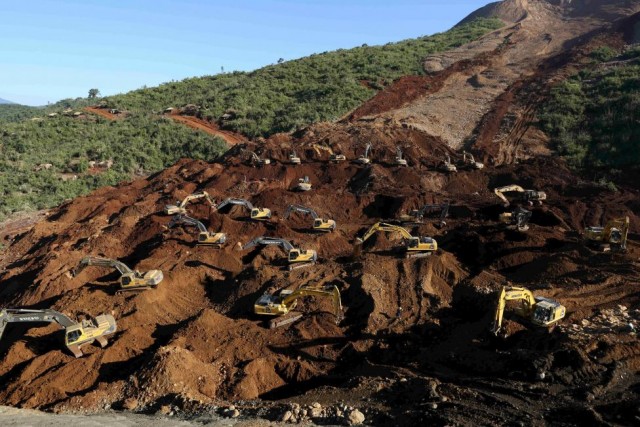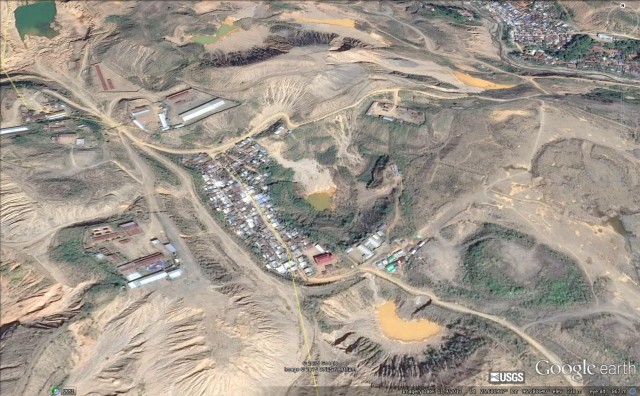27 November 2015
Who was to blame for the Hpakant jade mine landslide?
Posted by Dave Petley
The Hpakant jade mine landslide in Burma
Media reports suggest that the rescue and recovery operations in the aftermath of the Hpakant jade mine landslide have now ceased, with 114 bodies recovered. The number of unrecovered victims is unclear, but is likely to to be in the order of a further 90 or so. Reporting on the incident remains somewhat mixed – for example many sources suggest that the landslide was 200 feet (about 60 m) high, whereas the images clearly show that it was very much larger than this, such as this one (via Reuters):

Rescue operations at the site of the Hpakant jade mine landslide (via Reuters)
Meanwhile, a war of words has broken out regarding who was to blame for the Hpakant jade mine landslide. A key statement has come from the Nobel laureate and political leader Aung San Suu Kyi (often known as Daw Suu), who reportedly stated:
“As far as we understand, it was the fifth similar incident this year. This sort of accident is common just because there is no rule of law. It also reflects lack of due consideration for the safety of people’s life and property.”
On the other hand, the Director general of the Department of Mines, U Win Htein, appears to disagree. The Myanmar Times reports:
“U Win Htein, director general of the Department of Mines under the Ministry of Mines, said there is no need to upgrade safety rules as companies involved were not breaking the law. He added that mining firms comply with all the rules and regulations, reporting monthly to the ministry on safety procedures and the impact of their activities.”
I cannot comment on the legal situation in Burma, so have no idea as to whether the mines at Hpakant were operating within the law. However, it must be a moral responsibility of any mining company to ensure that its waste tips are stable and safe. This is entirely achievable, and indeed is the norm in most of the world. Of course the legal framework should ensure that this is the case, but even without a set of laws the norm must be to ensure that the mines are safe. Attempts to blame the victims, which seems often to be the case when this sort of event occurs on the basis that they should not have been living there, are not reasonable in my view. The Myanmar Times reports:
“U Win Htein said while the ministry is providing aid, it cannot do much more, as victims of the landslide were in the area illegally. The ministry sets out specific areas for mining companies to dump their waste – people should not enter these areas to look for jade,” he said. “But some people from remote areas had built huts to stay there. The soil collapsed due to rain. It’s a tragic case and I am very unhappy that people were killed.”
The proximity of dwellings to the mining operations in the Hpakant area is disturbing. This is a Google Earth image of a small part of the Hpakant area:
.



 Dave Petley is the Vice-Chancellor of the University of Hull in the United Kingdom. His blog provides commentary and analysis of landslide events occurring worldwide, including the landslides themselves, latest research, and conferences and meetings.
Dave Petley is the Vice-Chancellor of the University of Hull in the United Kingdom. His blog provides commentary and analysis of landslide events occurring worldwide, including the landslides themselves, latest research, and conferences and meetings.